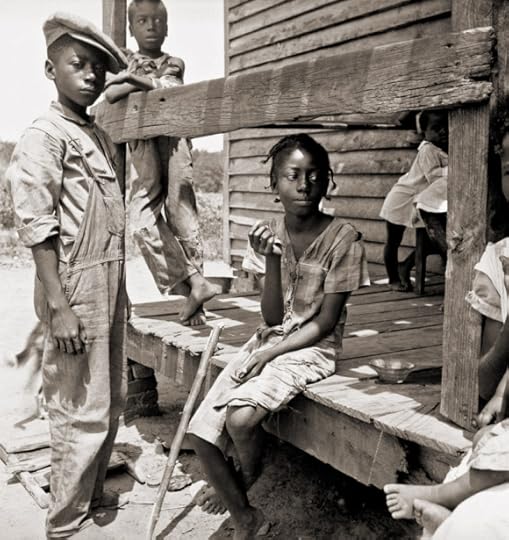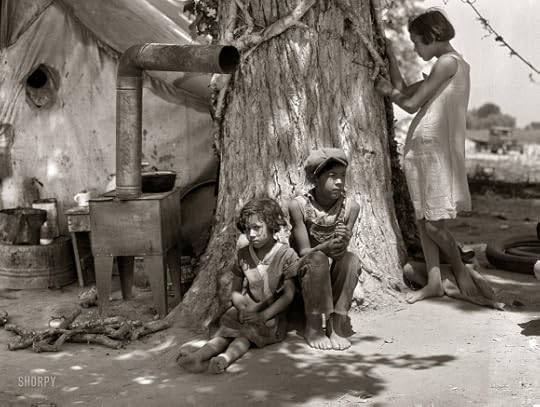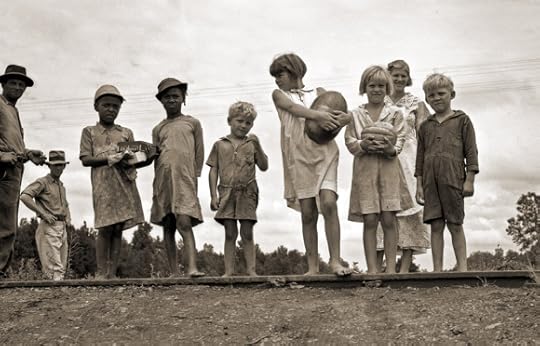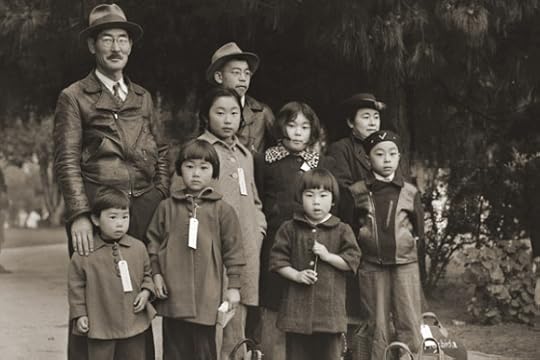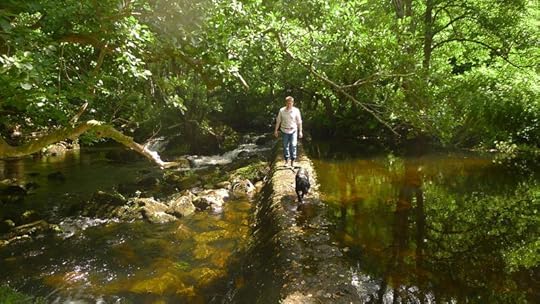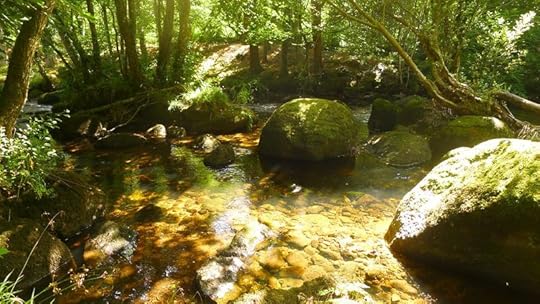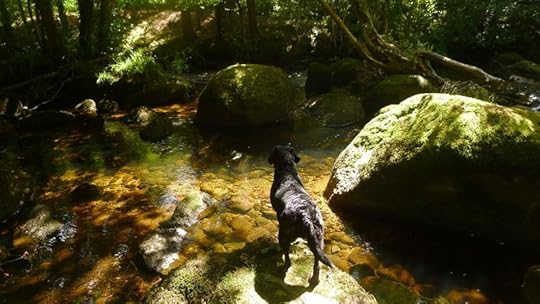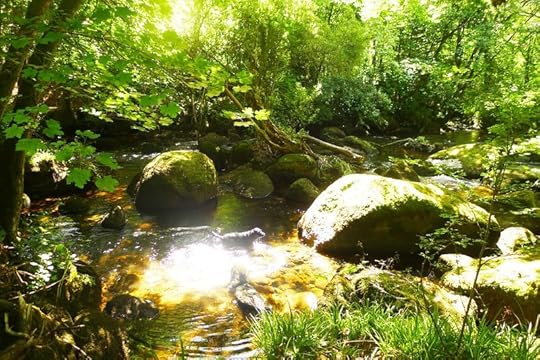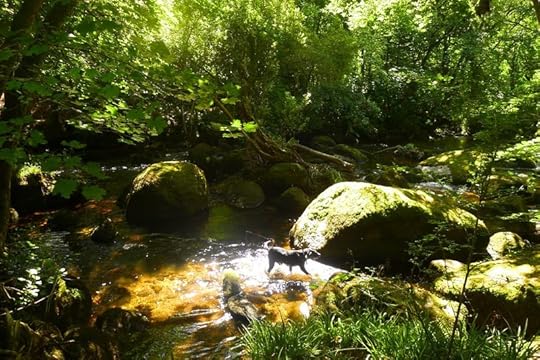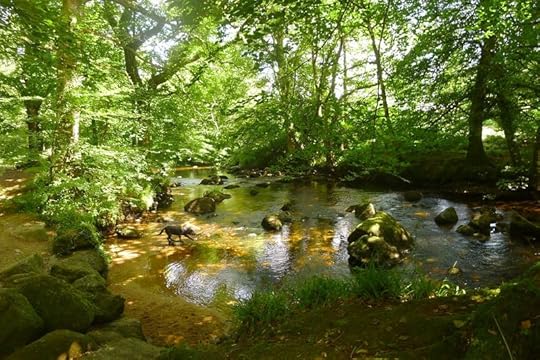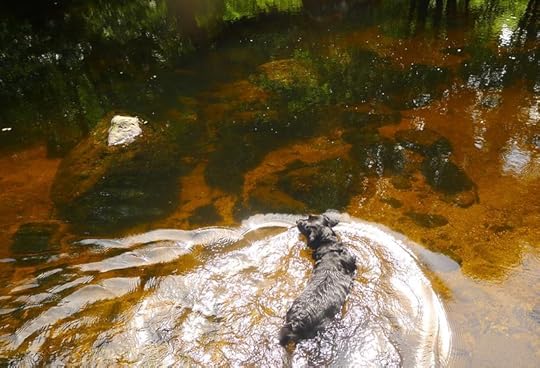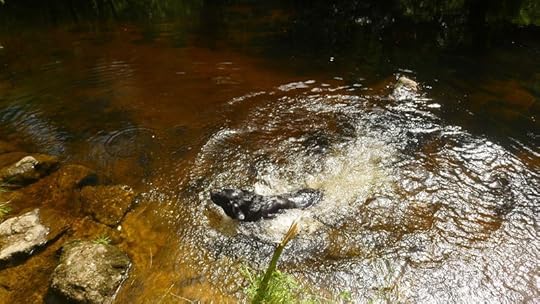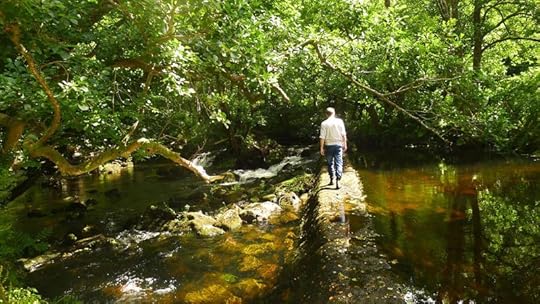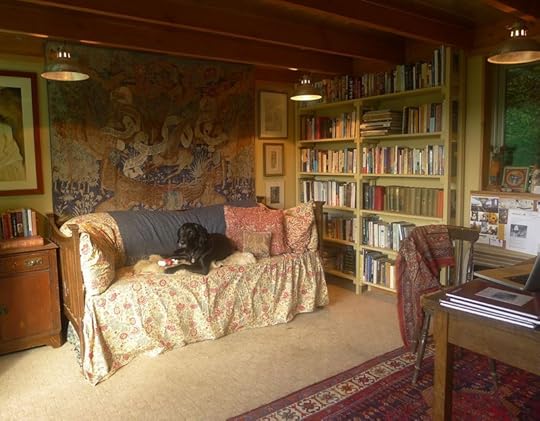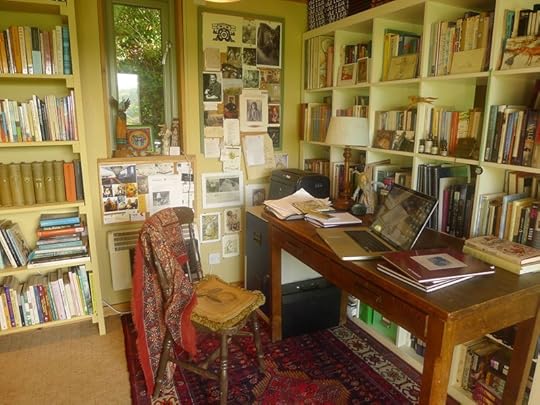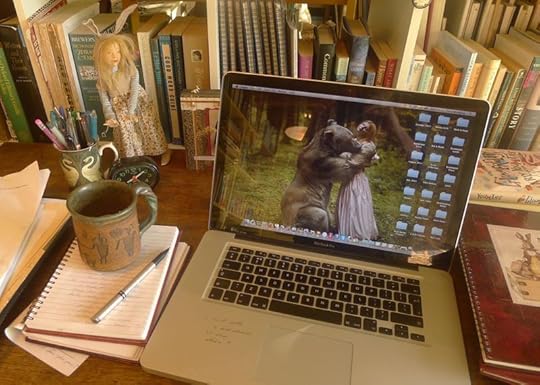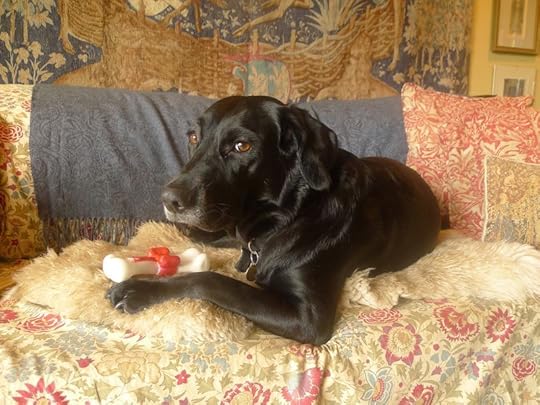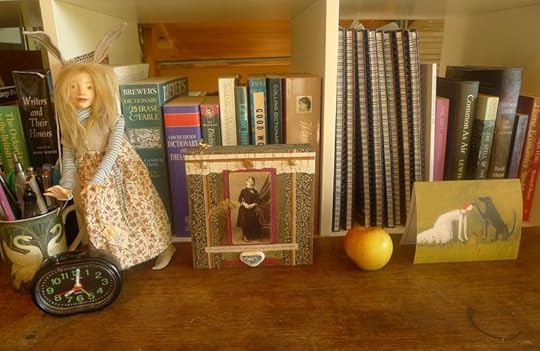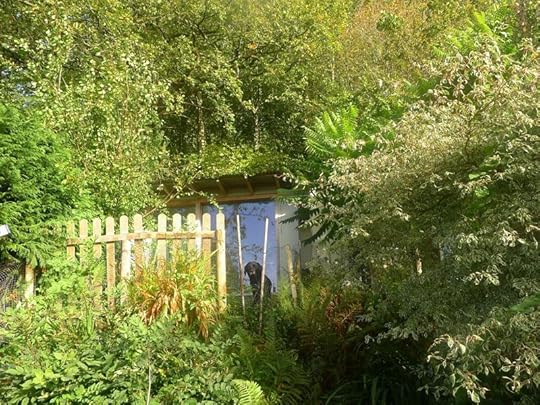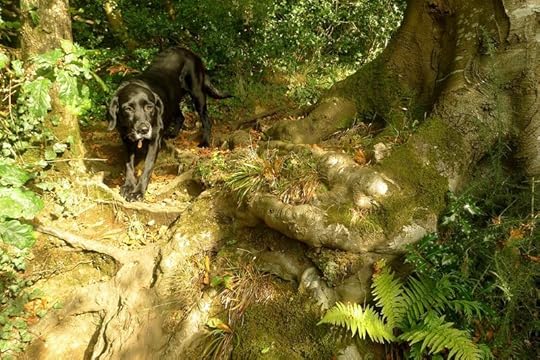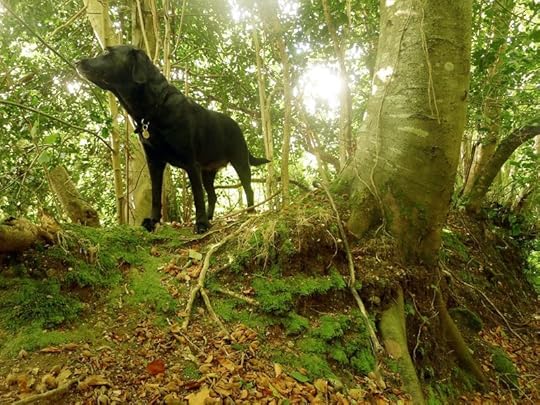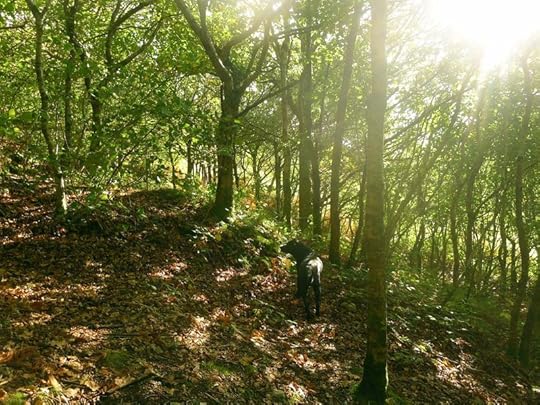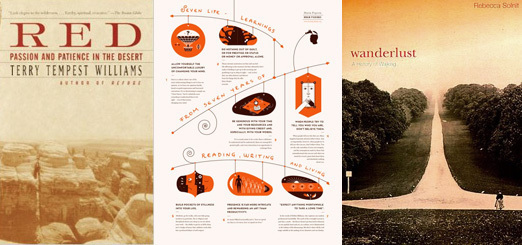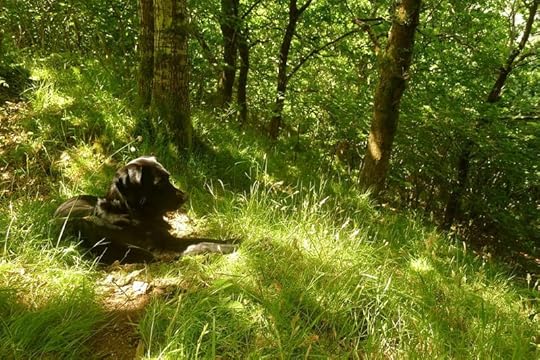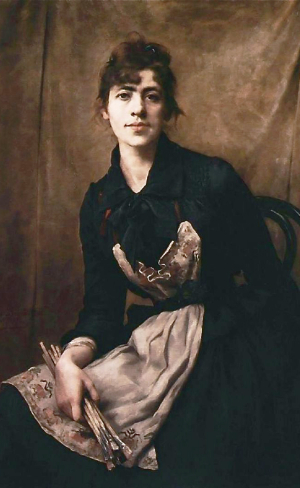Terri Windling's Blog, page 112
July 11, 2016
Tunes for a Monday Morning
With all the troubles in the UK and America right now, I initially thought about posting uplifting songs today...but decided to go in the opposite direction instead, showing how folk musicians past and present have looked at hard times unflinchingly, and created works of art from them.
Above, "Hard Times of Old England" performed by Gigspanner, a trio consisting of master fiddler Peter Knight (formerly of Steeleye Span), Roger Flack and Vincent Salzfaas. The song is a folk classic from the 18th century; the video pairs it with the hard times caused by Thatcher, and her brutal response to the miners' strikes of 1980s. It comes from Gigspanner's third album, Layers of Ages (2015).
Below: "Trouble in the Fields" by Nanci Griffith, a song about the American Dust Bowl days of the 1930s, accompanied by photographs of the period -- most of them by Dorothea Lange. The song was originally released on Griffith's fifth album, Lone Star State of Mind (1987).
Above, a song about families on the road during the Great Depression, looking for work and shelter wherever they could find it. "Harvest Gypsies" was written by Boo Hewerdine, sung here by Kris Drever, from Orkney, Scotland. It comes from Drever's first solo album, Black Water (2006).
Below: "Hard Times," performed by the American roots duo Gillian Welch and Dave Rawlings. The song was written by Welch, recorded on their sixth album, The Harrow & the Harvest (2011).
Above, "It's a Hard Life" by Nanci Griffith, from her eighth album, Storms (1989). Griffith was raised in Texas but has Scots-Irish roots; the song draws upon both sides of her history.
And last, below: "The Poorest Company," performed by Kris Drever, John McCusker, Roddy Woomble, and Heidi Talbot in Glasgow, Scotland. The song is by Drever, recorded on the Drever, McCusker, Wooble album Before the Ruins (2008).
If we turned from folk to blues, of course, we'd have a whole genre of music inspired by hard times...but that's a post for another day....
The photographs are by the great documentary photographer Dorothea Lange (1895-1965), taken during the 1930s and 1940s. They are identified in the picture captions.
July 8, 2016
How to move forward through difficult times
"Take the first step in faith. You don't have to see the whole staircase, just take the first step." - Martin Luther King Jr.
 The passage quoted in the picture captions is from The Edges of the Civilized World by Alison Hawthorne Deming (Picador, 1998); run your cursor over the pictures to read it. The photographs were taken on the south Devon coast.
The passage quoted in the picture captions is from The Edges of the Civilized World by Alison Hawthorne Deming (Picador, 1998); run your cursor over the pictures to read it. The photographs were taken on the south Devon coast.
July 7, 2016
Blessings for the works we lose
 Lines Lost Among the Trees
Lines Lost Among the Trees
by Billy Collins
These are not the lines that came to me
while walking in the woods
with no pen
and nothing to write on anyway.
They are gone forever,
a handful of coins
dropped through the grate of memory,
along with the ingenious mnemonic
I devised to hold them in place -
all gone and forgotten
before I had returned to the clearing of lawn
in back of our quiet house
with its jars jammed with pens,
its notebooks and reams of blank paper,
its desk and soft lamp,
its table and the light from its windows.
So this is my elegy for them,
those six or eight exhalations,
the braided rope of syntax,
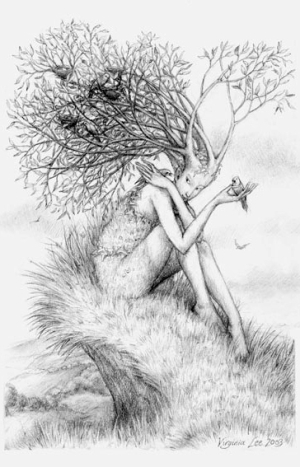 the jazz of the timing,
the jazz of the timing,
and the little insight at the end
wagging like the short tail
of a perfectly obedient spaniel
sitting by the door.
This is my envoy to nothing
where I say Go, little poem-
not out into the world of strangers' eyes,
but off to some airy limbo,
home to lost epics,
unremembered names,
and fugitive dreams
such as the one I had last night,
which, like a fantastic city in pencil,
erased itself
in the bright morning air
just as I was waking up.
All artists have books, or poems, or paintings, or projects that are never made manifest, ideas burning brightly in imagination that never transition into the physical world for all kinds of reasons: the timing isn't right; the pen isn't at hand; we are too busy, or ill, or fearful, or lazy; we don't have the space, the tools, the confidence needed to craft inspiration into tangible form. For whatever reason, we lose them. A story outline grows stale on us, the spark of a painting idea dims and goes out. So often there's a sense of shame attached to these never-mades and incompletes: the manuscripts stalled at Chapter Two, the illustrations planned but never finished, the projects discussed but never organized, the poems, like Billy's, lost among the trees....
But I prefer to think of these unformed artworks with gratitude, not shame. I imagine them all dwelling deep inside me. Yes, in one sense they have been lost: they will not be rendered in physical form. They will never engage in the conversation between writer/artist and reader/viewer that completes a work of art, existing only as scribbles in notebooks and sketch pads, slowly disappearing from memory. In the timeless realm of the soul, however, nothing is ever lost completely. I believe that each creative impulse nestles down in the dark loam of the psyche at levels much deeper than conscious thought. They are the compost that nurtures the roots of every story and painting we create today. And I bless them all.
 Billy Collin's poem is from Picnic, Lightning (University of Pittsburgh Press, 1998). The poem in the picture caption is mine; I've posted it here before, but it seemed to lend itself in re-use in today's context. The lovely drawings are "Miss Birch" and "Tree Nymph" by Virginia Lee. All rights reserved by the authors and artist.
Billy Collin's poem is from Picnic, Lightning (University of Pittsburgh Press, 1998). The poem in the picture caption is mine; I've posted it here before, but it seemed to lend itself in re-use in today's context. The lovely drawings are "Miss Birch" and "Tree Nymph" by Virginia Lee. All rights reserved by the authors and artist.
July 5, 2016
From the archives: down by the river
From "We Bear You in Mind," a letter to future generations by Scott Russell Sanders:
"You are still curled in the future, like seeds biding your time. Even though you are not yet born, I think of you often. I feel the promise of your coming the way I feel the surge of spring before it rises out of the frozen ground. What marvels await you on this wild Earth! When you do rise into the light of this world, you���ll be glad of your fresh eyes and ears, your noses and tongues, your sensitive fingers, for they will bring you news of a planet more wonderful and mysterious than anything I can tell you about in mere words.
"Mere words are all I have, though, to speak of what I���ve treasured during my days, and to say what I hope you���ll find when you take your turn under the sun. So I write this letter. As I write, I���m leaning against the trunk of a fat old maple in the backyard of our house here in the southern Indiana hills. It���s early one April morning, and the birds are loudly courting. I���m surrounded by the pink blossoms of wild geraniums, the yellow of celandine poppies, the blue of phlox. A thunderstorm is building in the western sky, and a brisk wind is rocking the just-opened leaves. My pleasure from wind and rain, from cloud drift and bird song, from the sound of creeks tossing in their stony beds, from the company of animals and the steady presence of trees ��� all of that immense delight is doubled when I think of you taking pleasure one day from these same glories."
"I hope you will find companion trees of your own, where you can hear the birds hurling their lusty cries and watch the flowers toss their bright blooms. May you climb into the branches to feel the huge body swaying beneath you and the wind brushing your face like the wings of angels.
"I hope you���ll be able to live in one place while you���re growing up, so you���ll know where home is, so you���ll have a standard to measure other places by. If you live in a city or suburb, as chances are you will, I hope you���ll visit parks, poke around in overgrown lots, keep an eye on the sky, and watch for the tough creatures that survive amidst the pavement and fumes. If you live where it never snows, I hope you���ll be able to visit places where the snow lies deep in winter. I want you to see the world clarified by that coating of white, hear the stillness, bear the weight and cold of it, and then relish warmth all the more when you go indoors. Wherever you live, I hope you���ll travel into country where the land obeys laws that people didn���t make. May you visit deep forests, where you can walk all day and never hear a sound except the scurry and calls of animals and the rustle of leaves and the silken stroke of your own heart."
"Thoughts of you make me reflect soberly on how I lead my life. When I spend money, when I turn the key in my car, when I vote or refrain from voting, when I fill my head or belly with whatever���s for sale, when I teach students or write books, ripples from my actions spread into the future, and sooner or later they will reach you. So I bear you in mind. I try to imagine what sort of world you will inherit. And when I forget, when I serve only my own appetite, more often than not I do something wasteful. By using up more than I need -- of gas, food, wood, electricity, space -- I add to the flames that are burning up the blessings I wish to preserve for you."
"If we take good care in our lifetime, you���ll be able to sit by the sea and watch the waves roll in, knowing that a seal or an otter may poke a sleek brown head out of the water and gaze back at you. The skies will be clear and dark enough for you to see the moon waxing and waning, the constellations gliding overhead, the Milky Way arching from horizon to horizon. The breeze will be sweet in your lungs and the rain will be innocent."
"Thinking about you draws my heart into the future. I want you to look back on those of us who lived at the beginning of the 21st century and know that we bore you in mind, we cared for you, and we cared for our fellow tribes -- those cloaked in feathers or scales or chitin or fur, those covered in leaves and bark..
One day it will be your turn to bear in mind the coming children, your turn to care for all the living tribes. The list of wild marvels I would save for you is endless. I want you to feel wonder and gratitude for the glories of Earth. I hope you���ll come to feel, as I do, that we���re already in paradise, right here and now."
And indeed we are
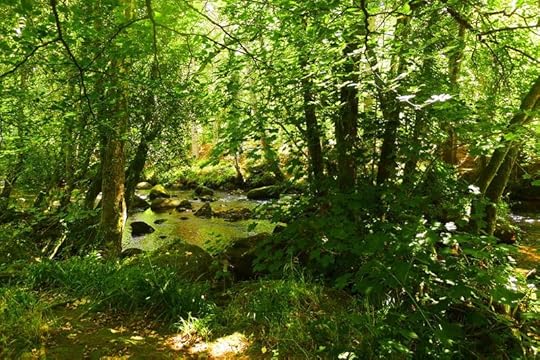 "We Bear You in Mind" was first published in Moral Ground: Ethical Action for a Planet in Peril, and reprinted in Orion Magazine. You can read it in full here. The poem in the picture captions is from The River at Wolf by Jean Valentine (Alice James Books, 1992). All right reserved by the authors.
"We Bear You in Mind" was first published in Moral Ground: Ethical Action for a Planet in Peril, and reprinted in Orion Magazine. You can read it in full here. The poem in the picture captions is from The River at Wolf by Jean Valentine (Alice James Books, 1992). All right reserved by the authors.
July 4, 2016
From the archives: a celebration of slowness
After too many days (and weeks) of political meltdown in the world around us, I am taking a quiet Retreat Day in order to center myself in my creative work again. I'll be back online tomorrow, and in the meantime, this post from a couple of years ago seems worth a re-visit....
From Rebecca Solnit's Wanderlust: A History of Walking:
"[My friend] Sono's truck had been stolen from her West Oakland studio, and she told me that although everyone responded to it as a disaster, she wasn't all that sorry it was gone, or in a hurry to replace it. There was a joy, she said, to finding that her body was adequate to get her where she was going, and it was a gift to develop a more tangible, concrete relationship to her neighborhood and its residents. We talked about the more stately pace of time one has on foot and on public transportation, where things must be planned and scheduled beforehand, rather than rushed through at the last minute, and about the sense of place that can only be gained on foot. Many people nowadays live in a series of interiors -- home, car, gym, office, shops -- disconnected from each other. On foot everything stays connected, for while walking one occupies the spaces between those interiors in the same way one occupies those interiors. One lives in the whole world rather than interiors built up against it....
"I had told Sono about an ad I found in the Los Angeles Times a few months ago that I'd been thinking about ever since. It was for a CD-ROM encyclopedia, and the text that occupied a whole page read, 'You used to walk across town in the pouring rain to use our encyclopedias. We're pretty confident that we can get your kid to click and drag.' I think it was the kid's walk in the rain that constituted the real education, at least of the senses and the imagination. Perhaps the child with the CD-ROM encyclopedia will stray from the task at hand, but wandering in a book or a computer takes place within more constricted and less sensual parameters. It's the unpredictable incidents between official events that add up to a life, the incalculable that gives it value. Both rural and urban walking have for two centuries been prime ways of exploring the unpredictable and incalculable, but now they are under assault on many fronts.
"The multiplication of technologies in the name of efficiency is actually eradicating free time by making it possible to maximize the time and place for production and minimize the unstructured travel time between. New time-saving technologies make most workers more productive, not more free, in a world that seems to be accelerating around them. Too, the rhetoric of efficiency around these technologies suggests that what cannot be quantified cannot be valued -- that that vast array of pleasures which fall into the category of doing nothing in particular, of woolgathering, cloud-gazing, wandering, window-shopping, are nothing but voids to be filled by something more definite, more productive, or faster paced....
"The indeterminacy of a ramble, on which much may be discovered, is being replaced by the determinate shortest distance to be transversed with all possible speed, as well as by electronic transmissions that make real travel less necessary. As a member of the self-employed whose time saved by technology can be lavished on daydreams and meanders, I know these things have their uses, and use them -- a truck, a computer, a modem -- myself, but I fear their false urgency, their call to speed, their insistence that travel is less important than arrival. I like walking because it is slow, and I suspect that the mind, like the feet, works at about three miles an hour. If this is so, then modern life is moving faster than the speed of thought, or thoughtfulness."
Solnit returned to the subject of time in an essay for the London Review of Books last year:
"Nearly everyone I know feels that some quality of concentration they once possessed has been destroyed. Reading books has become hard; the mind keeps wanting to shift from whatever it is paying attention to to pay attention to something else. A restlessness has seized hold of many of us, a sense that we should be doing something else, no matter what we are doing, or doing at least two things at once, or going to check some other medium. It���s an anxiety about keeping up, about not being left out or getting behind. (Maybe it was a landmark when Paris Hilton answered her mobile phone while having sex while being videotaped a decade ago.)
"The older people I know are less affected because they don���t partake so much of new media, or because their habits of mind and time are entrenched. The really young swim like fish through the new media and hardly seem to know that life was ever different. But those of us in the middle feel a sense of loss. I think it is for a quality of time we no longer have, and that is hard to name and harder to imagine reclaiming. My time does not come in large, focused blocks, but in fragments and shards. The fault is my own, arguably, but it���s yours too ��� it���s the fault of everyone I know who rarely finds herself or himself with uninterrupted hours. We���re shattered. We���re breaking up.
"It���s hard, now, to be with someone else wholly, uninterruptedly, and it���s hard to be truly alone. The fine art of doing nothing in particular, also known as thinking, or musing, or introspection, or simply moments of being, was part of what happened when you walked from here to there alone, or stared out the train window, or contemplated the road, but the new technologies have flooded those open spaces."
"I wonder," she muses later in the piece, "if there will be a revolt against the quality of time the new technologies have brought us, as well as the corporations in charge of those technologies. Or perhaps there already has been, in a small, quiet way. The real point about the slow food movement was often missed. It wasn���t food. It was about doing something from scratch, with pleasure, all the way through, in the old methodical way we used to do things. That didn���t merely produce better food; it produced a better relationship to materials, processes and labour, notably your own, before the spoon reached your mouth. It produced pleasure in production as well as consumption. It made whole what is broken."
(To read Solnit's essay in full, go here.)
In "7 Things I Learned in 7 Years of Reading, Writing, and Living," Maria Popova notes:
"Presence is far more intricate and rewarding an art than productivity. Ours is a culture that measures our worth as human beings by our efficiency, our earnings, our ability to perform this or that. The cult of productivity has its place, but worshipping at its altar daily robs us of the very capacity for joy and wonder that makes life worth living ��� for, as Annie Dillard memorably put it, 'how we spend our days is, of course, how we spend our lives.' "
(To read Popova's article in full, go here.)

Terry Tempest Williams, too, has questioned our culture's emphasis on speed, ease, productivity, and consumption. In "Ode to Slowness" (published in Red) she reflects on her transition from the urban pace of Salt Lake City to the quiet rhythms of a village in the Utah desert, using language that echoes my own transition from Boston and New York City to the Arizona desert and rural England:
"My husband and I were comfortable in our urban routine," she writes," but one night over dinner her said, 'What if we are only living half-lives? What if there is something more?'
"We wanted more.
"We wanted less.
"We wanted more time, fewer distractions. We wanted more time together, time to write, to breathe, to be more conscious with our lives. We wanted to be closer to wild places where we could walk and witness the seasonal changes, even the changing constellations. And so we banked on the idea of a simpler life away from the city near the slickrock country we love. What we would lose in income, we would gain in sanity."
Time, she discovered, (as I, too, discovered), moves differently outside of the city.
"I am not so easily seduced by speed as I once was," says Williams. "I find that I have lost the desire to move that quickly in the world. To see how much I can get done in a day does not impress me any more. I don't think it's about getting older. It feels more like honoring the gravity in my own body in relationship to place. Survival. A rattlesnake coils; its tail shakes; the emptiness of the desert is evoked.
"I want my life to be a celebration of s l o w n e s s ."
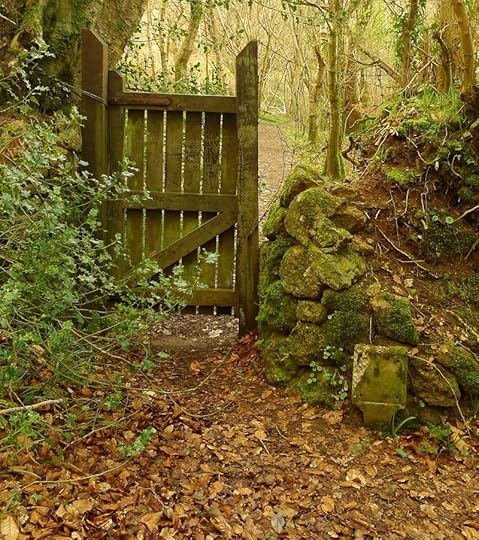
As do I. Oh, as do I.
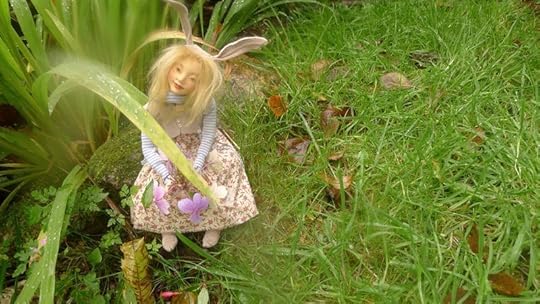 The passages above come from Wanderlust by Rebecca Solnit (Granta, 2014), "In the Day of the Postman" by Rebecca Solnit (London Review of Books, Aug. 2013), "7 Things I Learned..." by Maria Popova (Brain Pickings, Oct 2013), and Red by Terry Tempest Williams (Random House, 2001); all rights reserved by the authors. The Bunny Girl on my desk (and in the grass) is by Wendy Froud, the collage art by Lynn Hardaker, and the "woman with dog" card by Jeanie Tomanek.
The passages above come from Wanderlust by Rebecca Solnit (Granta, 2014), "In the Day of the Postman" by Rebecca Solnit (London Review of Books, Aug. 2013), "7 Things I Learned..." by Maria Popova (Brain Pickings, Oct 2013), and Red by Terry Tempest Williams (Random House, 2001); all rights reserved by the authors. The Bunny Girl on my desk (and in the grass) is by Wendy Froud, the collage art by Lynn Hardaker, and the "woman with dog" card by Jeanie Tomanek.
Tunes for a Monday Morning
The music today is from Devon's great folk & roots duo Show of Hands: singer-songwriter Steve Knightley and multi-instrumentalist Phil Beer, often joined by bassist Miranda Sykes. They've released over twenty albums since the late 1980s, and are much beloved here in the West Country.
The first two videos are from Centenary: Words & Music of Great War -- a two-album set that features classic World War I poetry (read by Jim Carter and Imelda Staunton), re-workings of songs of the period, and new songs written for the project.
Above: "Gameskeeper," the story of a gameskeeper from Devon who fought in the Battle of the Somme. The song was played in Exeter this past Friday -- the 100th anniversary of the first day of the battle -- at the opening of an art installation by Rob Heard, consisting of 19240 shrouded figures representing each of the Allied soldiers who lost their lives on that single day.
Below: "The Lads in Their Hundreds," with lyrics from A.E. Housman's A Shropshire Lad.
In this time of political turmoil, I'm drawn to the combination of passion and compassion underlying the band's more political songs. "Company Town" (above), for example, looks at America during the Depression and Dust Bowl days...and relates aspects of that era to our own.
"Country Life," below, is a song about left-behind farming communities in the West Country today -- ravaged by the affects of corporate Agribusiness, the Foot-and-Mouth Disease crisis, and years of neglect by urban-based politicans. (The band's on-going support of rural issues reminds me of John Cougar Mellancamp's support of Farm Aid in the United States.)
And last, in a different vein:
"Cruel River," based on the folklore of the River Dart. Knightley discusses the song's genesis, then performs it with Beer, Sykes, and Seth Lakeman -- another fine musician from Devon. The song was recorded for Wake the Union (2012)
The photo at the top of this post is from "Dogs of War," photographs of soldiers and dogs from WWI. The drawing at the bottom is a Devon river sketched by Alan Lee.
July 1, 2016
Jumping in....
by Marge Piercy
The people I love the best
jump into work head first
without dallying in the shallows
and swim off with sure strokes
almost out of sight.
They seem to become natives of that element,
the black sleek heads of seals
bouncing like half-submerged balls.
I love people who harness themselves, an ox
to a heavy cart,
who pull like water buffalo,
with massive patience,
who strain in the mud and the muck
to move things forward,
who do what has to be done, again and again.
I want to be with people who submerge
in the task, who go into the fields to harvest
and work in a row and pass the bags along,
who are not parlor generals and field deserters
but move in a common rhythm
when the food must come in or the fire
be put out.
The work of the world is common as mud.
Botched, it smears the hands, crumbles to dust.
But the thing worth doing well done
has a shape that satisfies, clean and evident.
Greek amphoras for wine or oil,
Hopi vases that held corn, are put in museums
but you know they were made to be used.
The pitcher cries for water to carry
and a person for work that is real.
"I want so to live that I work with my hands and my feeling and my brain. I want a garden, a small house, grass, animals, books, pictures, music. And out of this, the expression of this, I want to be writing. (Though I may write about cabmen. That���s no matter.) But warm, eager, living life -- to be rooted in life -- to learn, to desire, to feel, to think, to act. This is what I want. And nothing less. That is what I must try for." - Katherine Mansfield
 Pictures: Above right, ''Jo writing in the Attic'' (from Little Women) by Norman Rockwell (1894-1978), ''The Letter'' by Patricia O'Brien, ''Leonard Woolf at work at Hogarth Press'' by Vanessa Bell (1979-1961), and ''Dame Laura Knight Sketching'' by Harold Knight (1874-1961). Above left, "Self-portrait with Apron and Brushes" by Polish painter Anna Bili��ska (1857-1893). Words: Marge Piercy's poem comes from her collection Circles on the Water (Knopf, 1982). All rights reserved by the writer and artists or their estates.
Pictures: Above right, ''Jo writing in the Attic'' (from Little Women) by Norman Rockwell (1894-1978), ''The Letter'' by Patricia O'Brien, ''Leonard Woolf at work at Hogarth Press'' by Vanessa Bell (1979-1961), and ''Dame Laura Knight Sketching'' by Harold Knight (1874-1961). Above left, "Self-portrait with Apron and Brushes" by Polish painter Anna Bili��ska (1857-1893). Words: Marge Piercy's poem comes from her collection Circles on the Water (Knopf, 1982). All rights reserved by the writer and artists or their estates.
June 30, 2016
Going to ground
Here in Chagford, surrounded by woodland and moorland, by rain-soaked hills and fields full of flowers and sheep, we tend to live half-a-step removed from the pace and preoccupations of modern life. Time itself moves differently. The lanes to the village are winding and narrow, slowing you down as you make the approach, or stopping you altogether when sheep, cows or ponies are crowding the road. Village shops are small, service leisurely as neighbors chitchat over the counters (while city folk check their watches impatiently). Internet and mobile phone services don't always work here, and the rest of the world can seem very far away....
But it's not, of course. And when bad news comes relentlessly, as it has this past month, it reaches us here in Brigadoon too. And it has been relentless. The shootings in Orlando. The shooting in Yorkshire. The bombing in Turkey. The EU Refendum. The smoldering racism encouraged by self-serving figures like Trump, Farage, and Le Pen. So many people shouting. So few people listening. And the polar ice caps quietly melting away all the while.
I keep "going to ground," and I mean that literally: going out to the woods to find solace and strength, to find calm and clarity. In such times, I believe, we need art more than ever. So I turn to nature, and I turn to stories, for guidance. For insight. For healing.
"A people are as healthy and confident as the stories they tell themselves," says Ben Okri. "Sick storytellers can make nations sick. Without stories we would go mad. Life would lose it���s moorings or orientation....Stories can conquer fear, you know. They can make the heart larger."
"Fiction and poetry are doses, medicines," Jeanette Winterson concurs. "What they heal is the rupture reality makes on the imagination."
Earlier this month, before the world went crazy, I posted these words by Ursula K. Le Guin:
"Hard times are coming, when we���ll be wanting the voices of writers who can see alternatives to how we live now, can see through our fear-stricken society and its obsessive technologies to other ways of being, and even imagine real grounds for hope. We���ll need writers who can remember freedom -- poets, visionaries -- realists of a larger reality.''
I didn't realize those hard times would be quite so soon.
The late, great Lloyd Alexander also spoke about truths best conveyed through magical modes of storytelling. " 'True to life' may not always be true enough," he said. "The difficulty is perhaps in confusing truth with objectivity. By its very nature, art can never be objective. Try as we might, we can't 'tell it like it is.' We can only tell it the way it seems to us. And this, of course, is what we must do -- in realism or in fantasy -- if we hope to create anything of durable value. We have always needed good art to sustain us, to strengthen us, even to console us for being born human. Where better can we learn to see through the eyes of others, to gain compassion, to try to make sense of the world outside ourselves and the world within ourselves?"
"To open our eyes, to see with our inner fire and light, is what saves us," says Chickasaw poet & novelist Linda Hogan. "Even if it makes us vulnerable. Opening the eyes is the job of storytellers, witnesses, and the keepers of accounts. The stories we know and tell are reservoirs of light and fire that brighten and illuminate the darkness of human night, the unseen."
If you, too, are struggling with your creative work during this unsettled time, this is what I advise:
First, do whatever you need to right now to find h��zh�� (balance), stillness, center ground. Once you've found it, or even a whisper of it, then take a deep breath. Let it out. And begin. No matter what medium you are using to weave new stories, remember that this is good work to be doing. The world needs more light, more beauty, more wonder. More compassion for the Other. More understanding of the darkness.
Together, we'll light a path for those coming after. Breathe deep. And again.
And begin.
 The Ben Okri quote is from his essay collection A Way of Being Free (Phoenix, 1998). The Jeanette Winterson quote is from her memoir Why Be Happy When You Could Be Normal? (Vintage, 2012). The Ursula Le Guin quote is from her National Book Award acceptance speech (November, 2014). The Lloyd Alexander quote is from Innocence & Experience: Essays & Conversations on Children's Literature, edited by Barbara Harrison & Gregory Maguire (Lothrop, Lee & Shepard, 1987). The Linda Hogan quote is from her memoir The Woman Who Watches Over the World (WW Norton, 2001). The poem in the picture captions is from Anam Cara by John O'Donohue (Harper Perennial, 1998). All rights reserved by the authors.
The Ben Okri quote is from his essay collection A Way of Being Free (Phoenix, 1998). The Jeanette Winterson quote is from her memoir Why Be Happy When You Could Be Normal? (Vintage, 2012). The Ursula Le Guin quote is from her National Book Award acceptance speech (November, 2014). The Lloyd Alexander quote is from Innocence & Experience: Essays & Conversations on Children's Literature, edited by Barbara Harrison & Gregory Maguire (Lothrop, Lee & Shepard, 1987). The Linda Hogan quote is from her memoir The Woman Who Watches Over the World (WW Norton, 2001). The poem in the picture captions is from Anam Cara by John O'Donohue (Harper Perennial, 1998). All rights reserved by the authors.
June 29, 2016
Recommended Reading
A round-up of recent reading, magpie gleanings from hither and yon....
"Beatrix Potter, Enyd Byton, and the 'pictureskew' " by China Mi��ville (The Guardian)
"John Masefield and British Fantasy of the 1920s" by Rob Maslen (The City of Lost Books)
"Irish Fantasy Writers and the Easter Uprising" by Rob Maslen (The City of Lost Books)
"Synchrony in Howl's Moving Castle" by Rob Maslen (The City of Lost Books)
"Maps of Fantasy Worlds" by Annalee Newitz (Io9)
"Why Do Adults Read YA Fiction?" by Austen Hackney (AH blog)
"Malefice" by Leslie Wilson (Seven Miles of Steel Thistles)
"Tiny Fairies" by Katherine Langrish (Seven Miles of Steel Thistles)
"Victorian Fairies and the Early Work of J.R.R. Tolkien" by Dimitra Fimi (Working With English)
"Fairies, Demons, and Ghosts in Shakespeare" by Dimtra Fimi (Oxford University Press blog)
"Wonders of the Northland: Hamlet and Macbeth" by Rob Maslen (The City of Lost Books)
"Estella Canziani: Piper of Dreams" by Christina Ruth Johnson (Enchanted Conversations)
"The Frog-King, or Iron Henry" by Mari Ness (Tor.com)
"A Field Guide to Mythic Monsters," reviewed by Maria Popova (Brain Pickings)
"Irish Bards Could Kill Rats with Poetry" by John Kelly (Slate)
"Word Obsessive" by Susan Price (Nennius)
"A���ghailleann: On Language-Learning" by Iona Sharma (The Toast)
"What the Green Man can teach us" by Paul Kingsnorth (The New Statesman)
"The Nature of Britain" by Elizabeth Yale (Aeon)
"The Palm Trees and the Poetry of W.S. Merwin" by Casey N. Cep (The New Yorker)
"The Lost Gardens of Emily Dickinson" by Ferris Jabr (The New York Times)
"The Politics of Place: Terry Tempest Williams" (Scott London Interviews)
"Who Owns the Earth?" by Antonia Malchik (Aeon)
"The Songs of the Wolves" by Holly Root-Gutteridge (Aeon)
"A New Origin Story for Dogs" by Ed Yong (The Atlantic)
"The Metamorphosis: What's It Like to Be an Animal?" by Joshua Rothman (The New Yorker)
"Rewilding Human Nature" by Lucy Purdy (Positive News)
"Schooled in Nature" by Jay Griffiths (Aeon)
"Opening Our Eyes to Beauty" by Fiona Reynolds (The Guardian)
"Heartwood," story and art by Jackie Morris (The Tree Charter)
"An Open Letter to the Hat-Wearing Dog from Go Dog, Go" by Raquel D'Apice (Ugly Volvo)
"On the Invisibility of Middle-Aged Women" by Dorthe Nors (Literary Hub)
"Women and Water" by Victoria Leslie (The Dangerous Women Project)
Marina Warner on Angela Carter (Discovering Literature: 20th Century)
"Georgia O'Keefe and Juan Hamilton" by Charlotte Cowles (Harpers Bazaar)
"Borges and $" by Elizabeth Hyde Stevens (Longreads)
"Ray Bradbury: Between Dystopia and Hope" by Patrick West (Spiked Review)
"The Thing With Fathers: The New Poetry of Fatherhood" by Stephen Burt (Boston Review)
"Louise Erdrich: By the Book" (The New York Times)
"Jenny Diski's In Gratitude" by Heidi Julavits (The New York Times)
"Fictional Homes in New York City" by Michelle Colman (CityRealty)
On Laurie Anderson's new film Heart of a Dog by Ryan Gilbey (The New Statesman)
Laurie Anderson on childhood, storytelling and hiding by Paul Holdengraber (Literary Hub)
Maira Kalman on mistakes, optimism, dogs and art by Jessa Gross (Longreads)
Katherine Langrish on Alan Garner and First Light (Seven Miles of Steel Thistles)
A conversation with Philip Pullman by Katy Waldman (Slade)
A conversation with Max Porter by Carmen Maria Machado (Electric Literature)
Rebecca Solnit on social change and hope (BillMoyers.com)
Rima Staines calls for a roots revolution (The Hermitage)
Sarah Smarsh on why art is more necessary than ever (On Being)
Samira Thomas in praise of patience (Aeon)
Lin-Manual Miranda's commencement speech at U Penn (Heatstreet)
Stories for creating a more hopeful world by Sita Brahmachari (Guardian Children's Books)
And some recommended viewing...
"Six Forgotten Female Pioneers of Photography" by Sara Crompton (The Guardian)
"Everday Life in 19th Century Cornwall," photographs (The Guardian)
"Indian's Disappearing Musicians," a photo essay by Souvid Datta (The Guardian)
"The Shinto Onbashira matsuri in Japan," video (Aeon)
June 28, 2016
Widdershins 2016: Pathways to the Faerie Realm
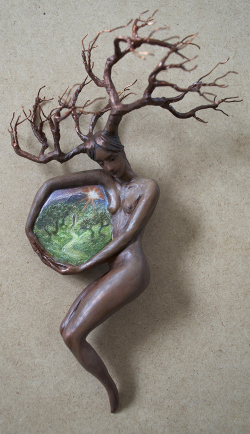 The Widdershins exhibition has opened at Green Hill Arts in Moretonhampstead, running until August 27th. A sign by the gallery door explains the exhibition's premise:
The Widdershins exhibition has opened at Green Hill Arts in Moretonhampstead, running until August 27th. A sign by the gallery door explains the exhibition's premise:
"Dartmoor is a landscape rich in legend, full of ghostly white Whist Hounds, shapeshifting Witch Hares, trolls who lurk under clapper bridge and piskies who dance among standing stones. Ancient carvings of the Green Man can be found all over Devon, symbolizing the wild green mysteries of nature. Old country folk still put bowls of milk out for the faeries, to seek their blessing...and to ward off their mischief!
"All of the artists in this show are local to Dartmoor (or have strong local connections), inspired by the timeless magic of the land. Their art explores myth, folklore, hedge-magic and faery tales in diverse ways -- ranging from earthy to ethereal, spiritual to whimsical, and dark to light. Walking widdershins (counter-clockwise) is a pathway into Faerie. Come with us. There are wonders ahead."
The photographs below come from the show's opening night (last Friday), accompanied by a transcript of Alan Lee's eloquent introductory speech. I haven't photographed every piece of art however, or transcribed all of the quotes written on the walls, as that would lessen the sense of discovery for those who are planning to come and see it. But here's a peek....
 Georgiana Lingard (of Green Hill Arts) and Alan Lee open the exhibition
Georgiana Lingard (of Green Hill Arts) and Alan Lee open the exhibition
An Introduction to Widdershins 2016
by Alan Lee
I don���t know if we are in a fairy hot-spot here in Devon, but we definitely seem to be in a fairy hot-spot. Dartmoor, and the South West in general, have generated a rich history of fairy-lore, folk tales, and mysterious legends, and have inspired writers, story-tellers, and artists for a long time. Perhaps it is something in the water (the salt waters of the shoreline, the murmuring streams, the mist, the rain, the moorland bogs), or something in the shifting, transitory quality of the weather (the slow seasonal changes, the long summer dusks) that lends itself to fey thoughts and to an immersion in stories.
 A wall of faery drawings & paintings by Alan Lee & Brian Froud
A wall of faery drawings & paintings by Alan Lee & Brian Froud
And if you can edit out the cacophony of our road traffic and our post-industrial times, there is a soft soundscape that is every bit as alluring...
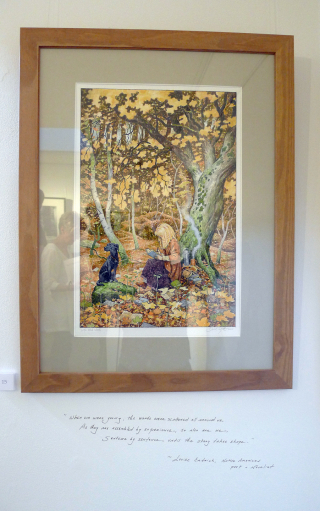 Be not afeard; the isle is full of noises,
Be not afeard; the isle is full of noises,
Sounds and sweet airs, that give delight and hurt not.
Sometimes a thousand twangling instruments
Will hum about mine ears, and sometime voices
That, if I then had waked after long sleep,
Will make me sleep again: and then, in dreaming,
The clouds methought would open and show riches
Ready to drop upon me that, when I waked,
I cried to dream again.
Ok, it���s a bit escapist; but when you think about it, many (if not most) of the landmarks in our cultural history were small steps forward while looking back over our shoulder at an ancient and often illusory past: a golden age, an age of wonders and lost civilizations. Of learning. Of giants.
 Artist Alexandra Dawe & her partner examining JRR Tolkien illustrations by Alan Lee
Artist Alexandra Dawe & her partner examining JRR Tolkien illustrations by Alan Lee
Medieval monks collected and transcribed legends set in the mythological past. Mallory and Chaucer wove romances and folk-tales into great works of art. Shakespeare, Spenser and Michael Drayon drew deeply from the British fairy tradition.
 Mythic art by David Wyatt, Marja Lee, Virginia Lee, & Danielle Barlow
Mythic art by David Wyatt, Marja Lee, Virginia Lee, & Danielle Barlow
Then there are the Gothic and Romantic movements, the Pre-Raphaelites, the Neo Romantics, all reviving past modes of thought, techniques, and aesthetics. It���s in the poetry of Shelley, Keats, Christina Rossetti, and W.B. Yeats. It���s in children���s literature, and in the cinema, right from the beginning.
 Mythic paintings, sculptures, & objects by Virginia Lee, David Wyatt, Hazel Brown, & Wendy Froud
Mythic paintings, sculptures, & objects by Virginia Lee, David Wyatt, Hazel Brown, & Wendy Froud
A number of the artists in this exhibition work as illustrators, putting their skills at the service of writers who have brought a new vigour to this type of storytelling, such as Terry Prachet, Geraldine McCaughrean and Phillip Reeve. Others make objects which bring that magic, and those stories, into a fascinating physical form. Forget Brexit for an hour or two, and enjoy exploring them.
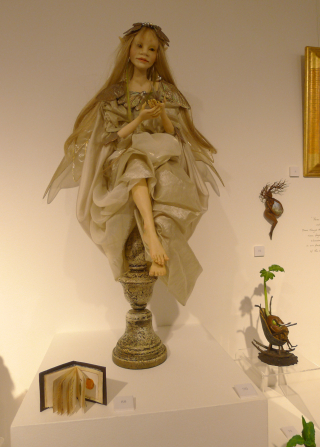 Over hill, over dale,
Over hill, over dale,
Thorough bush, thorough brier,
Over park, over pale,
Thorough flood, thorough fire,
I do wander everywhere,
Swifter than the moon's sphere;
And I serve the fairy queen,
To dew her orbs upon the green.
The cowslips tall her pensioners be:
In their gold coats spots you see;
Those be rubies, fairy favours,
In those freckles live their savours:
I must go seek some dewdrops here
And hang a pearl in every cowslip's ear.
Farewell, thou lob of spirits; I'll be gone:
Our queen and all our elves come here anon.
 Faery sculptures by Wendy Froud
Faery sculptures by Wendy Froud
 Faery paintings by Hazel Brown
Faery paintings by Hazel Brown
"The job of a storyteller is to speak the truth; but what we feel most deeply cannot be spoken in words. At this level only images connect. And so story becomes symbol; and symbol is myth." - Alan Garner
 Marja Lee & Brian Froud in front of Marja's paintings
Marja Lee & Brian Froud in front of Marja's paintings
 Mythic paintings by Rima Staines and Marja Lee
Mythic paintings by Rima Staines and Marja Lee
"Humans are storytelling creatures. We need story, we need deep mythic happenings, as much as we need food and sun: to set us in our place in the family of things, in a world that lives and breathes and throws us wild tests, to show us the wildernesses and the lakes, the transforming swans, of our own minds." - Sylvia Lindsteadt
 Artists Suzi Crockford, Rima Staines, & Hazel Brown
Artists Suzi Crockford, Rima Staines, & Hazel Brown
 Mythic arts by Virginia Lee, Pauline Lee, & Angharad Barlow
Mythic arts by Virginia Lee, Pauline Lee, & Angharad Barlow
"Dealing with the impossible, fantasy can show us what may really be possible. If there is grief, there is the possibility of consolation; if hurt, the possibility of healing; and above all, the curative power of hope. If fantasy speaks to us as we are, it also speaks to us as we might be." - Lloyd Alexander
 Artists Angharad Barlow, Virginia Lee, & David Wyatt
Artists Angharad Barlow, Virginia Lee, & David Wyatt
 Mythic hares by Paul Kidby & Danielle Barlow
Mythic hares by Paul Kidby & Danielle Barlow
 With our daughter Victoria, in front of my hand-stitched collages
With our daughter Victoria, in front of my hand-stitched collages
 Two of my six collages: "A Luminosity of Birds" & "Once Upon a Time"
Two of my six collages: "A Luminosity of Birds" & "Once Upon a Time"
"Magic lies in between things, between the day and the night, between yellow and blue, between any two things." - Charles de Lint
 Dramatist & puppeteer Howard Gayton (my husband), with faery art by Brian Froud & Alan Lee
Dramatist & puppeteer Howard Gayton (my husband), with faery art by Brian Froud & Alan Lee
"Storytellers ought not to be too tame. They ought to be wild creatures who function adequately in society. They are best in disguise. If they lose all their wildness, they cannot give us the truest joys." - Ben Okri
 Theatrical costume designer Jenny Gayton (my mother-in-law)
Theatrical costume designer Jenny Gayton (my mother-in-law)
 Poet & storyteller Tom Hirons
Poet & storyteller Tom Hirons
 Artists Rima Staines & Wendy Froud
Artists Rima Staines & Wendy Froud
"What is wild cannot be bought or sold, borrowed or copied. It is. Unmistakeable, unforgettable, unshamable, elemental as earth and ice, water, fire and air, a quitessence, pure spirit, resolving into no contituents. Don't waste your wildness: it is precious and necessary.���- Jay Griffiths
For more information on the show, go here, or visit the Green Hill Arts website.
"Touch magic, pass it on." - Jane Yolen
Terri Windling's Blog
- Terri Windling's profile
- 708 followers



